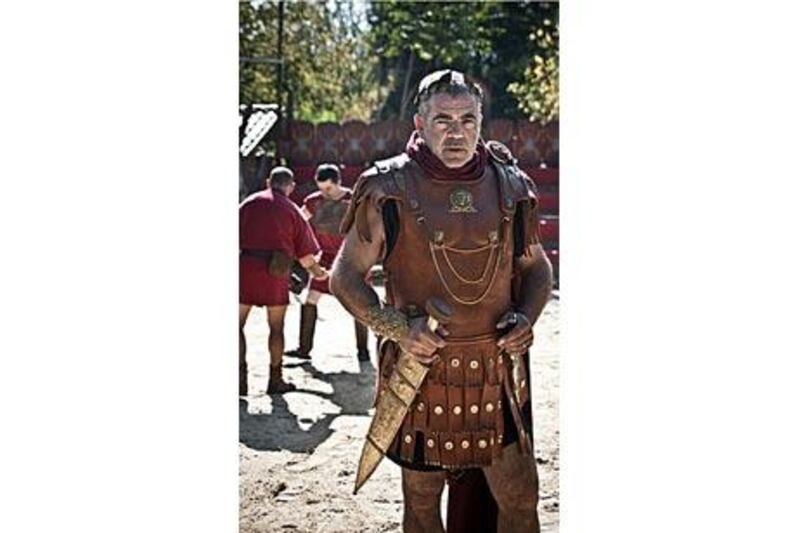Sergio Iacomoni, chief gladiator trainer in Rome I was born in 1952 in the medieval town of Viterbo, north of Rome, so I have Etruscan blood, rich in history. As a child I always had stories of gladiators in my head. But for many years I had no connection to gladiators - I was a banker. We set up the gladiator school in 2000. It started off as a hobby, a sport about fighting, winning and losing rather than a cultural exercise. Then it became transformed. I was inspired by ancient texts, archaeological digs, mosaics, sculptures - although everything was subject to a lot of guesswork and interpretation. Within two days of setting up the school CNN came to do a report. We realised straight away that it was going to be a success.
The most difficult thing was perfecting the art of gladiator combat - we could recreate the weapons but we did not know the techniques they used in fighting. We tried for many years to use the weapons in the best way possible, researching everything we could find. We have made some mistakes but now we believe we have got it right. Gladiator training is now as close as possible to the real thing. It will never be completely real because the real gladiators were terrified of dying and that spurred them to fight. We don't risk people's lives. Ancient gladiators used many weapons, small swords, spears, tridents, lances, bows and arrows. Our weapons are exactly the same - the wooden swords are exactly the same weight and measurements as real ones but they don't have a sharp point that could cut you. Gladiators in training wear tunics at all times, as well as helmets and sandals.
We currently have four instructors, including one woman. To become an instructor of the first level using a gladio - a short sword about 60cm long, and a shield - you have to come for two years and then pass a test to qualify. Then you have to train one additional year for every different type of weapon you want to be certified in. Eighty per cent of our visitors come from the US. The other 20 per cent are Russians, Australians, South Africans, English, Kuwaiti and tourists from lots of other countries. Americans are obsessed with gladiators, some come back four or five times. One even had special glasses made so he could see better in combat.
Russell Crowe has helped us. With the film Gladiator he [generated] a bit of excitement around gladiators and kick-started a fashion. There is a bit of everything in the people who come here - those who come for the athletics, the physical aspect, others who come for the historical reconstruction. Young people are the most excitable - they come with their friends. I love seeing very rich people - important managers, politicians and others - get covered in mud, dust and sweat to experience the feeling of being a gladiator.
Not so long ago people didn't talk about ancient Rome - celebrating our heritage was confused with fascism. Now people appreciate the history that we are trying to preserve. We are part of the Gruppo Storico Romano - a Roman cultural association - that puts on re-enactments. We are resurrecting an art that would have been lost otherwise. The school is located in the street where the famous rebellion of the slaves commanded by Spartacus took place in 73BC. It was a violent battle, but Rome won and Spartacus and the slaves lost. About 10,000 slaves were killed and 5,000 to 7,000 people were crucified along Via Appia Antica, the ancient Appian Way or Roman Road, with a cross every 100 metres. Legend has it that the first cross belonged to Spartacus and the location is almost exactly opposite our site.
* Interview by Emily Ford










